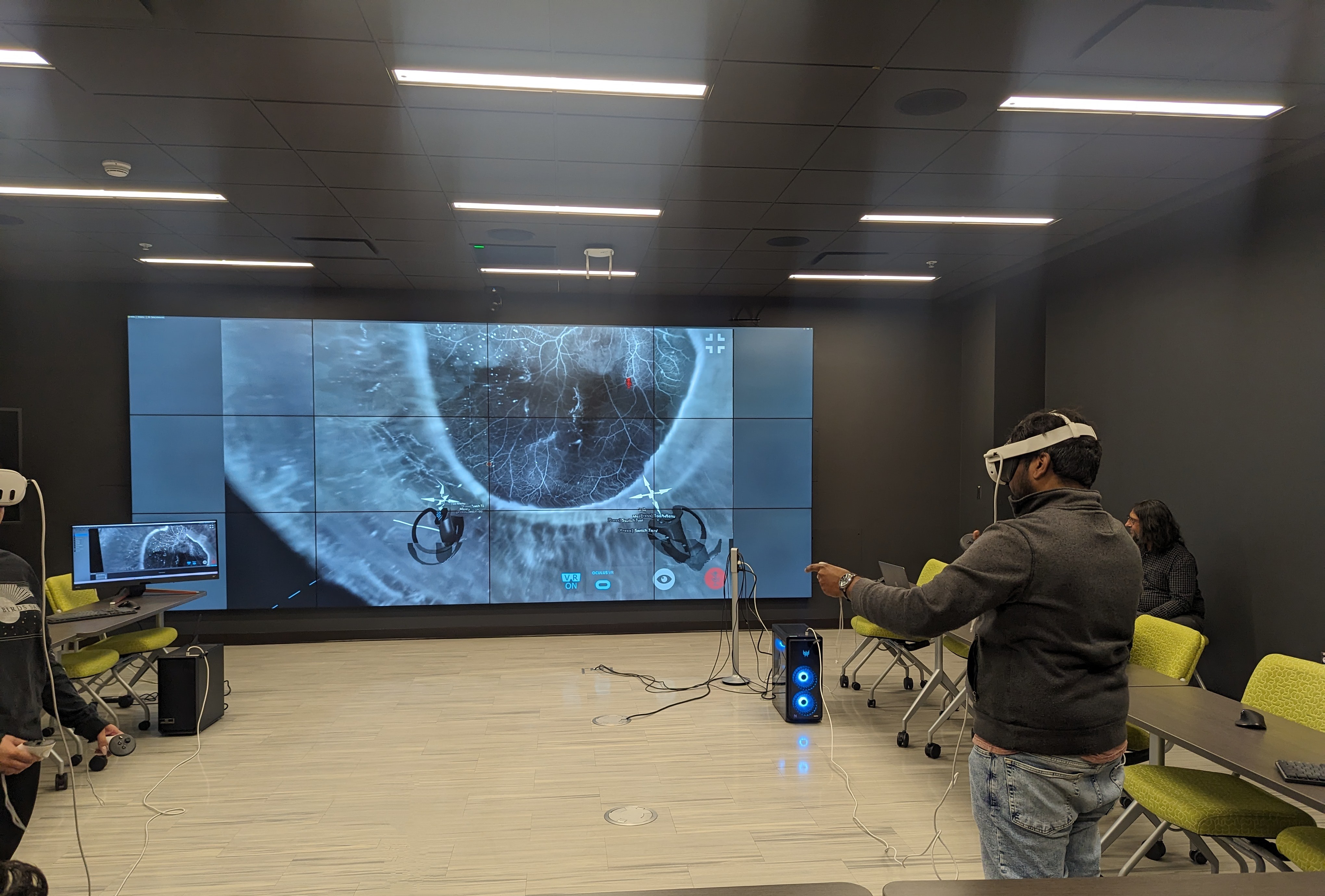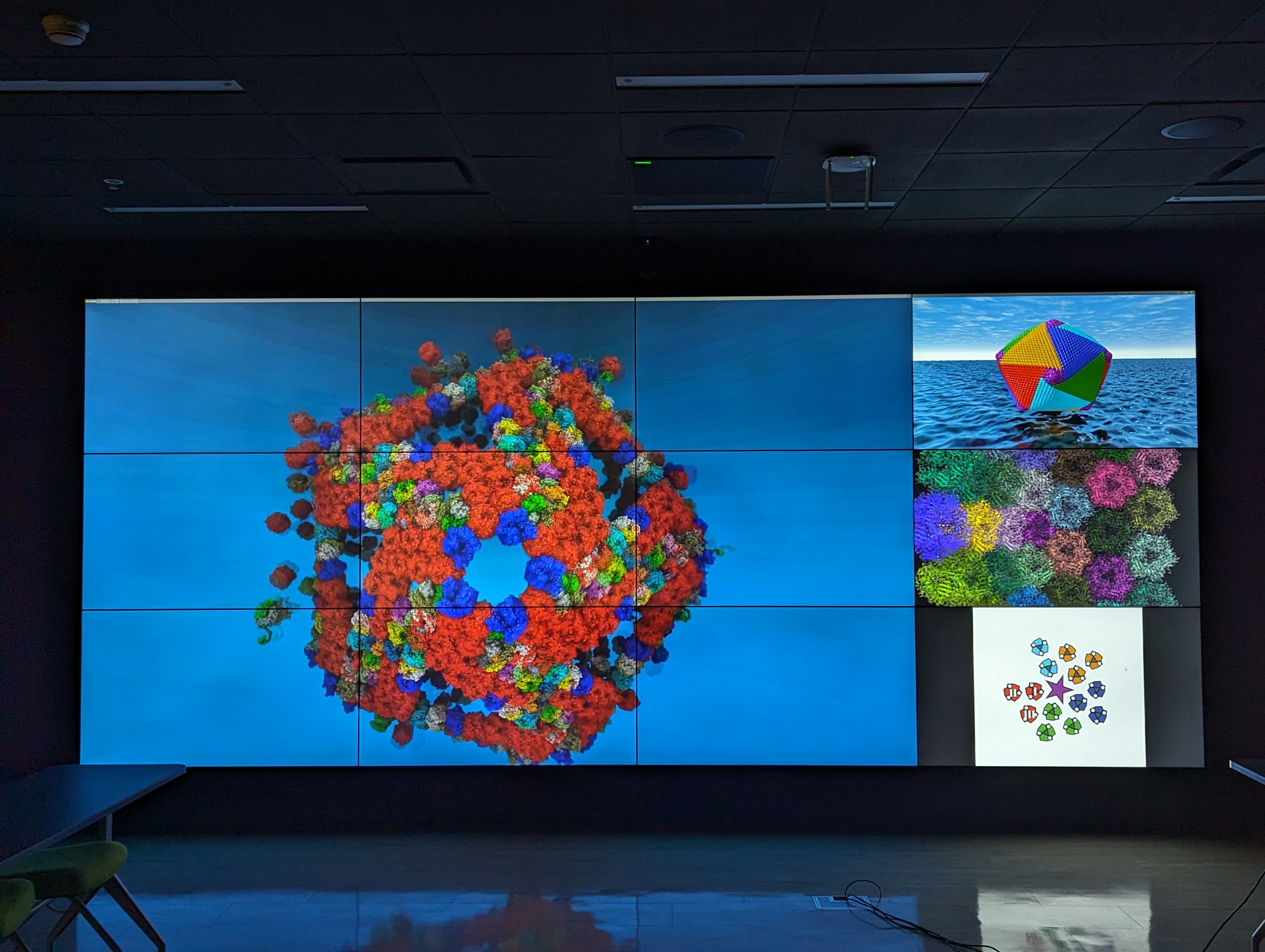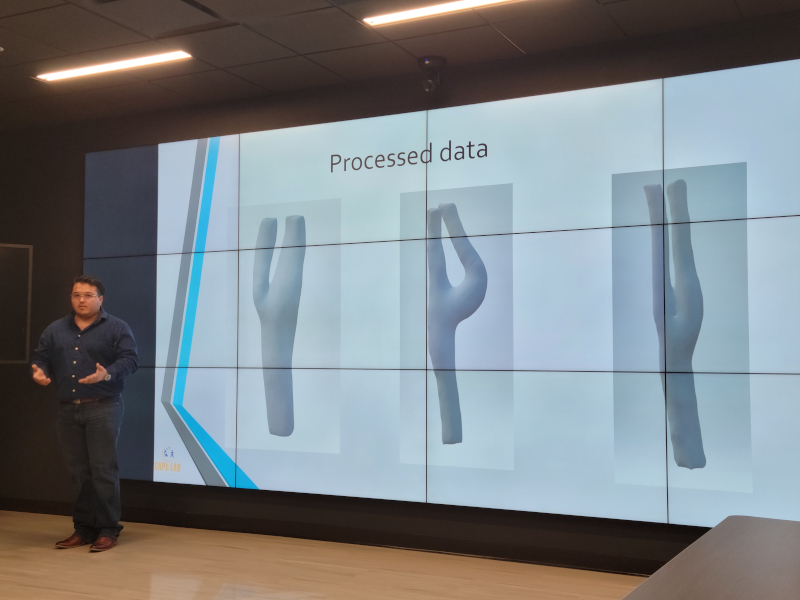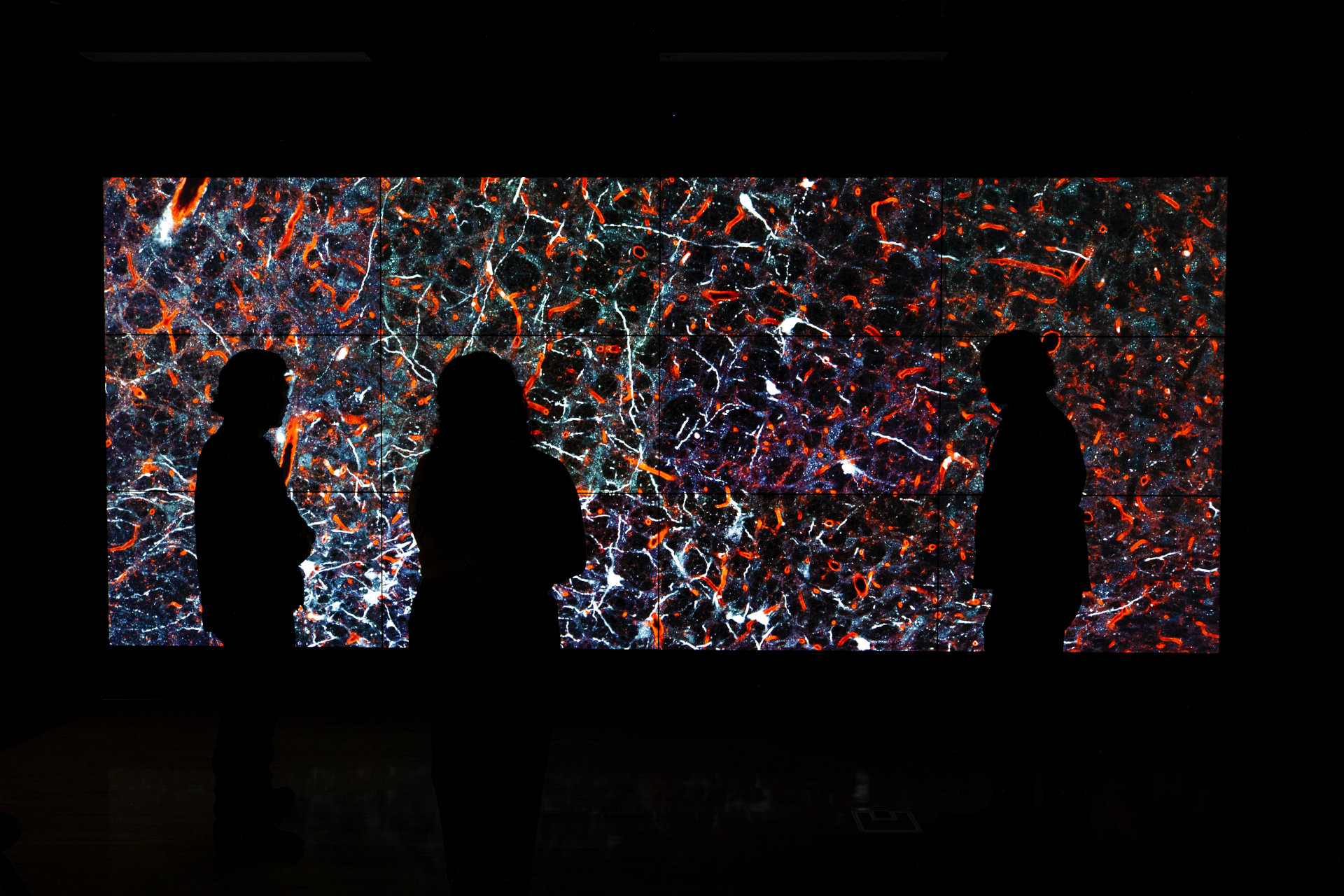CroV Marine Virus
Aquatic giant viruses or giruses, have important ecological roles within water systems to maintain biodiversity, regulate microorganism populations, and accelerate the recycling of nutrients. Due to their large size, study of these viruses has posed a challenge to current techniques. Our team tackles the visualization challenges of Cafeteria roenbergensis virus (CroV), a giant marine virus consisting of a 120 million atom protein shell. We generated various 3-D and stereoscopic images and animations to mimic the virus assembly by automatically load large number of virus capsid proteins, position them, and simulate Brownian motion using codes developed by programming languages such as Python, C, and TCL.




